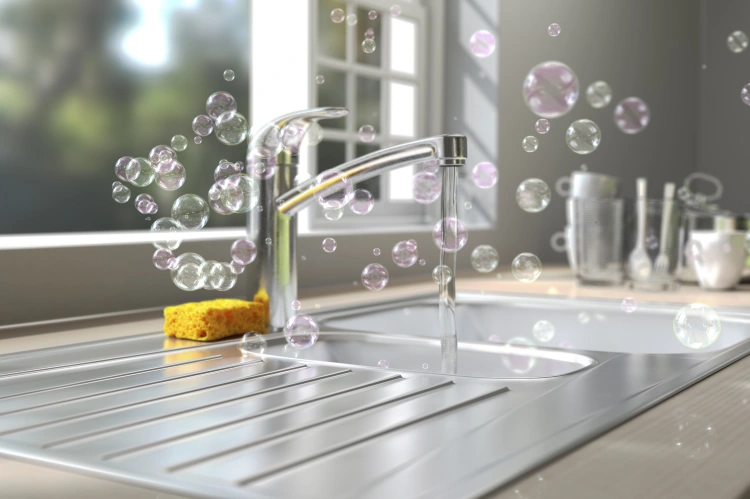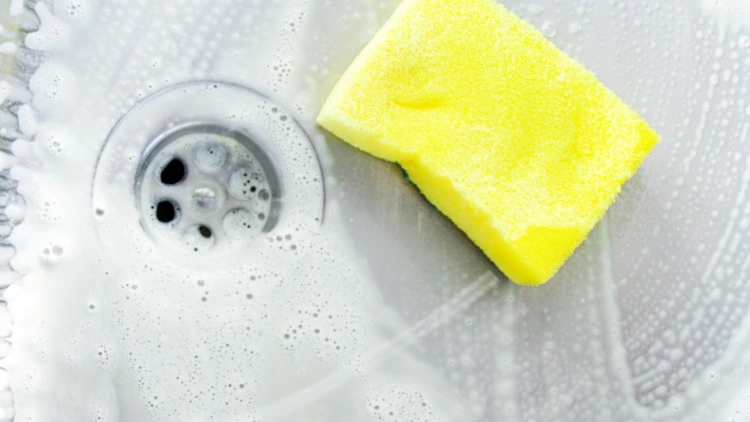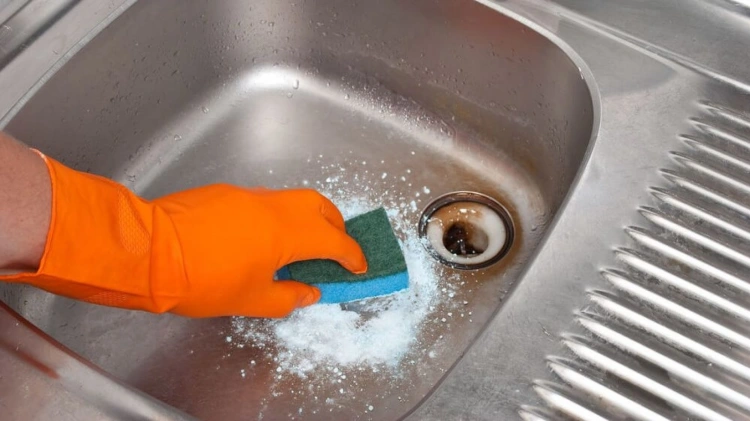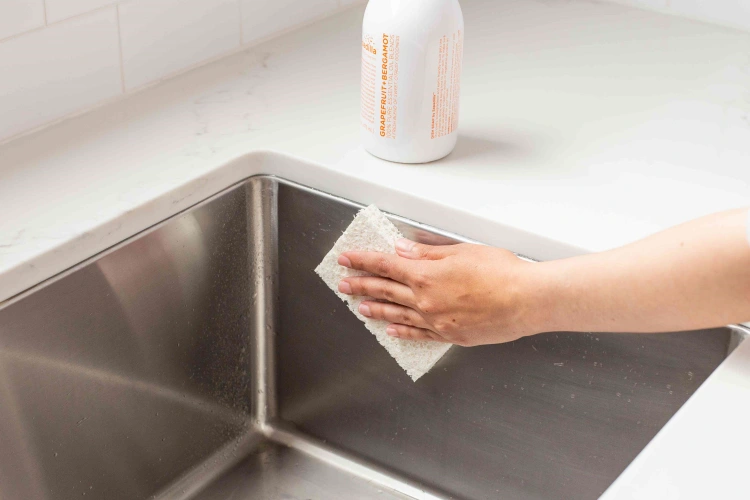Keeping the kitchen clean is essential for the good appearance of the interior, but also for the health of all family members. That’s why you need to regularly clean the floor, appliances and cabinets. When it comes to the sink, you simply must not compromise on keeping it clean and in good condition. Due to daily use, its surface is often covered with dark stains, rust, or limescale that all need to be removed. In today’s article, you will find many useful stainless steel sink cleaning hacks that will help you maintain good hygiene in your home.
Stainless steel sink cleaning hacks
Cleaning the sink depends a lot on the material it is made of. In today’s article, we’ve decided to focus on stainless steel, as it is increasingly being favored by more and more people as a sink option. This is because of the reliability and long service life that most manufacturers guarantee. But no matter how high quality the material is, the sink always needs a thorough cleaning! That’s why we’ve prepared some great cleaning hacks and tips to help you with this task.
How to clean a stainless steel sink: Where to start from?
To thoroughly clean your stainless steel sink and enjoy great results, it’s a good idea to start with your routine cleaning. It should be cleaned of any food debris, dirt and some build-up. After removing any residue, use dish soap and a sponge to clean the sink. Rinse it well afterward.
Removing stubborn stains with baking soda
If after the initial cleaning, you notice that there are still stubborn stains, you should continue until you have got rid of them as well. Of course, you can choose some chemical products, but it is just as reasonable to use natural remedies that are safe and equally effective. Baking soda is one of them.
It is necessary to sprinkle a generous amount of it on the wet sink (do not miss the sides too). Then use a cloth or soft sponge (and in no case a scouring pad – it will damage the surface of the sink). Dip the sponge or cloth in slightly warm water and, in a circular motion, start scrubbing the sink until the stains are gone. Rinse thoroughly when finished.
Removing limescale from a stainless steel sink
If you live in an area with hard water, due to the constant contact with your sink, limescale can build up. It can badly affect how your sink looks and will probably annoy you just looking at it. Luckily, there are some easy ways to get rid of it thanks to products that everyone has at home. Let us give you some ideas now!
- Use vinegar – it’s proven to be good for removing all kinds of grime, but it’s also good to know that you shouldn’t pour it directly on the sink. Make a 1:1 solution of distilled white vinegar and water and spray the surfaces with it. Let it sit for 2–3 minutes, then wipe and rinse. It is important not to leave the cleaning solution on for too long, as the vinegar can damage the sink surface.
- Another reliable cleaning agent is citric acid. Place a stopper over the drain opening and fill the sink with warm water. Pour in a packet of citric acid and stir until dissolved. Let it sit for at least an hour, then scrub all over with a sponge. Take out the stopper and rinse its walls with clean water.
Other hacks to make your sink shine
If you want to enjoy a clean and shiny stainless steel sink you can also use the following products and tricks:
- Vinegar and olive oil. Spray the sink with a 1:1 solution of vinegar and water as we described above, then wipe, rinse and dry with a cloth. Take a clean microfiber cloth and drizzle some olive oil on it. Rub over the surface of the sink to give the stainless steel a protective shine.
- Use sparkling water. Simply spray the sink with it, then wipe dry with a microfiber cloth. Not only will it clean stains, you’ll also achieve a smooth and shiny surface.
- Dishwashing liquid and olive oil. In a spray bottle, mix warm water and a small amount of dishwashing liquid. Spray the solution on the sink and wipe with a clean microfiber cloth. Then cover the sink with a small amount of oil to give it a protective shine and keep it sparkling clean.





